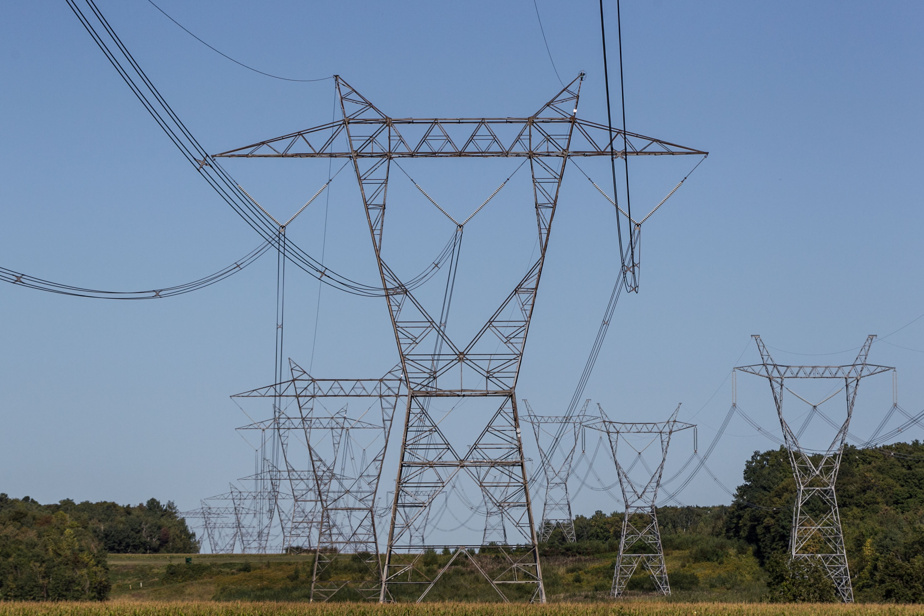The electricity that will power the future Windfall gold mine in Abitibi will come from Hydro-Québec, but it will be transported by a private transmission line 87 kilometers long and already built, a first in Quebec.
The high-voltage transmission line inaugurated today belongs to Miyuukaa Corp, a company owned by the Crees of Waswanipi, who built it and put it into service last January.
“It’s historic in Quebec and perhaps in Canada,” said Mathieu Savard, president of Osisko Mining, which owns the Windfall gold deposit, in co-ownership with the South African mining company Gold Fields.
Osisko and its partner obtained an electricity supply of 27 megawatts from Hydro-Québec. They will be Miyuukaa’s customers for the delivery of energy to the mining site located between Val-d’Or and Chibougamau.
In addition to considerably reducing energy costs and the environmental footprint of mining activities, the association with the First Nations for the transmission of electricity is perhaps the model of the future for the next Hydro projects. Quebec.
“It lays the foundations for a way of seeing energy development in northern Quebec,” says Mathieu Savard.
The private transmission line dedicated to the future mine is a first in Quebec, confirms Hydro-Québec. The state-owned company has already partnered with the Mohawks of Kahnawake who will co-own the Quebec portion of the transmission line that will transport Quebec electricity to New York. Mohawk participation is 10% and could rise to 49%.
Hydro-Québec CEO Michael Sabia said when announcing this agreement that it was an example of new ways of working with First Nations and Inuit.
The state-owned company plans huge investments to increase its electricity production and plans to build 5,000 kilometers of transmission lines.
Government assistance
The private transmission line that will connect the Hydro-Québec network to the future gold mine has been in service since last January. 87 kilometers long, it required investments of 177 million, part of which, or 40 million, came from Transition Énergie Québec and 30 million from Investissement Québec. The FTQ fund and the James Bay Development Corporation also participated in financing the project.
Hydro-Québec itself undertook the transmission line construction project in 2020, with the intention of paying financial compensation to the First Nations, as it generally does.
The Crees of Waswanipi then took responsibility for the project. “It’s an idea that came from the Crees and we jumped at the opportunity because it’s not always the days that we have the opportunity to have a power line on a project of this magnitude- there,” indicated the president of Osisko.
Electricity at industrial rates from Hydro-Québec is by far the best option for the future mine.

PHOTO DOMINICK GRAVEL, LA PRESSE ARCHIVES
The president of Minière Osisko Mathieu Savard
For any mining project, the big cost is energy. It was clear that if there was access to electricity, with Hydro-Québec’s Rate L, it is very, very competitive compared to all other sources of energy.
Mathieu Savard, president of Osisko Mining
The 27 megawatts of energy obtained from Hydro-Québec will make it possible to partially electrify the underground operations, the ore processing plant and the camp of the future gold mine, where 600 to 700 people will work full time . Reducing diesel consumption should and reduce its diesel consumption. The reduction in greenhouse gas emissions is estimated at 17,000 tonnes per year.
The Windfall project is considered a world-class gold deposit, the likes of which are rarely discovered in the world, according to Mathieu Savard.
The project is at the environmental development stage and if all authorizations are obtained, the mine could be operational in 2026.
Between the first exploration activities and the start of mining activities, more than ten years will have passed and more than a billion will have been spent.
